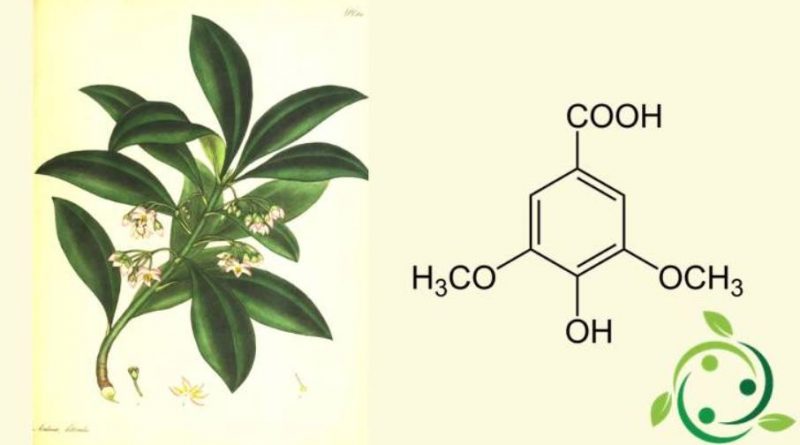Syringic acid
Syringic acid
Syringic acid, whose term in the IUPAC nomenclature is: 4-hydroxy-3,5-dimethoxybenzoic acid and has the chemical formula C9H10O5.
Syringic acid is a naturally occurring compound Ardisia elliptica, Schumannianthus dichotomus, Quercus infectoria, Alcea rosa and Euterpe oleracea.
Syringic acid is present in foods in different fruits including olives, dates, spices, pumpkin, grapes, acai palm, honey, red wine, vinegar, etc.
Various studies would show that syringic acid has useful pharmaceutical properties such as antioxidants, antimicrobials, anti-inflammatory, anti-tumor and anti-diabetic properties.
Syringic acid can be polymerized enzymatically. This occurs by means of the laccase and peroxidase which induce the polymerization of the syringic acid to produce 1,4-phenylene oxide, which brings a carboxylic acid at one end and a phenolidroxyl group to the other.
Chemically, syringic acid can be prepared by selectively hydrolyzing (with methylation) eudesmic acid with 20% sulfuric acid.
Warning: The information shown is not medical advice and may not be accurate. The contents are for illustrative purposes only and do not replace medical advice.

